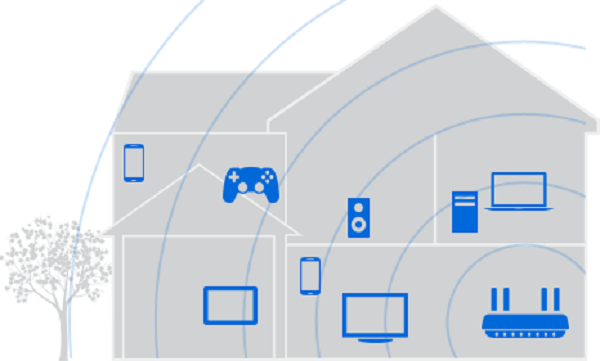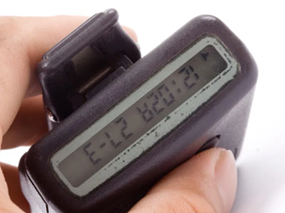Tricks and curiosities to improve our Wi-Fi network coverage and signal to all corners of the home, among others, we highlighted the following: reuse an old router, using a repeater-amplifier or a wireless access point.
What is better, which system is right for me, is more powerful, faster, easier to install, inexpensive and reliable? Well, then we’ll try to answer these and other questions.
Recycle my old router
Over the years, most have been stored in different models of home routers or neutral purchased by us and who stayed out of date or serial which we have been offering operators and ultimately never went to pick up. These teams can have a second life if we use them as Wi-Fi access points alternative to our current router to improve connectivity in any room that resists signal to arrive.

The idea is simple and passes put the old router to this problem room to create your own wireless network and connect to the main router through three different ways: through a Wi-Fi connection, using an Ethernet cable or through an adapter PLC . Consider the disadvantages of each method.
Starting with Wi-Fi, it would be that both were connected wirelessly, but if we have been problems of coverage, does not seem the best option to use (well that is not supported by all routers). The direct Ethernet cable is, undoubtedly the best choice, although we will take the issue to the room, which can cause aesthetic problems and possible serious conflicts WAF difficult to solve.
Finally, we have the option PLC, which uses the electricity grid. It is a good alternative if ours is quality while saving reuse the old router may be we go to buy the PLC. (If you have any unused home can be a good time to do so).
Once we have decided on a system interconnection (I recommend the direct cable or do not choose another system to extend Wi-Fi) we need to set the old router to do its function. The process depends on each particular model but basically goes through change the old original IP router so that there is no conflict with the new and forwards their requests to the DHCP IP the main router (which is usually 192.168.1.1). In this article, you have explained a particular case contend using two models.
That done, now would be the time to set up the network in the Wi-Fi router recycling with parameters, passwords and other technical paraphernalia usual and we would have a wireless access point in the problem room practically zero cost.
Advantages and disadvantages! The first advantage as already mentioned is the price. The router does not cost us anything and only have to purchase an Ethernet cable if you have not already. As disadvantages, we find that is not a process type “plug and play”. You have to go fiddling with router settings, a situation that can give us any problems.
“Reusing a model we have in the drawer for years might not be a good idea if we seek the maximum speed and minimum delay”
There is also the issue of performance. Routers operators usually do not shine by its performance. Reusing a model we have in the drawer for years might not be a go idea if we seek the maximum speed and minimum delay, as it surely will hardly be compatible with the latest wireless standards (with luck it will be with Wi-Fi 802.11 a / b / g and up to 54 Mbps) and most likely in the end only we find it useful for basic web browsing, instant messaging, social networks, etc. but not for more demanding applications such as video streaming.
Wireless access points, repeaters-amps
The other great option that carries a wireless network to every corner of the home passes new specific hardware used for this function as an access point, a repeater or amplifier. Are they not the same? Well, yes and no, because the name depends on the functions that incorporate and how we market the manufacturer. We may find with devices that integrate one, several or all functions (access point, repeater, extender, amplifier, etc.).
For example, a basic access point, no extra features, allow us to create our own independent WiFi network the main router. We can place it in the same room with him, connected by an Ethernet cable and probably will have more coverage, actual speed and power that the wireless network standard, since they are specifically prepared to fulfill this task.
However, if our problem is to bring the signal to a remote room to another floor, etc. where the routers have not given us a good solution for having a lot of distance, multiple attenuations by thick walls, etc., it is likely that the access point have a similar unless either powerful or problem about where to place we need the connection. Here we are again with the disadvantage that needs to carry the local network using an Ethernet cable if you want the best performance, which in many cases is not possible.
Some will tell me that access points are usually much more powerful, they give fewer problems and that there are Internet scandals with powers with which to transfer any wall that nags us. You are right, but beware buy models abroad with stratospheric powers, because you could have some trouble with the limiting, and far radiated power of these devices.
Anyway, if our only chance happens to place the access point in the same room as the router and still continue with coverage problems in remote rooms may then an amplifier-repeater intermediate help us.
Basically, in charge of detecting the wireless signal, regenerate and amplify it to come out like new. There are those with and without wired and capable of operating with very different configurations out repeater mode, bridge mode, only as an access point, as a customer, etc.
Installation is usually immediate and passes by plugging them into the wall and maybe pressing button synchronization. The problem is usually that if the initial Wi-Fi signal is very bad, we must find an intermediate place in the house for coverage to reach all ends well.
That is, if our problem room does not get well the original Wi-Fi signal (for that is the problem room), put one of these amplifiers in this room probably will not fix us anything. We’ll have to put it in an intermediate room losing part of the total power it offers.
Summing
Which option is best of all we have seen (we would lack the PLC adapters with Wi-Fi) Well, depends on our needs, expectations and how we want to spend.
If you do not need a very fast connection and can deploy a network cable to the desired location, recycling old router will be the cheapest option, but since we have cable, it would be better to spend a little more and put an access point quality with which to forget problems for a few years.
If we cannot pull the cable through the floor or walls, then probably what suits us will use a repeater-amplifier at an intermediate point of the house. Usually cheap, simple to install and usually perform their function whenever the Wi-Fi signal that reaches them is decent.
Does your Wi-Fi home slower due to the lights? Probably not
British communications regulator has issued a statement to publicize an application for iOS and Android that allows you to check the quality of our Wi-Fi network and spoke of different elements that can affect that quality. You can be calm and have lit the lights all you want because the impact of the lights is not important. It can be the cables with which we connect, attentive.
Become electromagnetic fields
In a press release, it explains how various electronic devices generate electromagnetic fields that can cause interference in the quality of transmissions via Wi-Fi. Microwave ovens, cordless phones or baby monitors celebrities are usually clear examples in this area.
Wireless networks typically work in the range of 2.4 GHz, although new standard Wi-Fi routers and also exploit and 5 GHz band. By using such high-frequency radio waves are very short and weaker, which makes such interference could potentially affect the quality of communications.
James Hoburg, a professor at Carnegie Mellon, explained that “electronic end-user devices are designed to be used in a certain environment and to interact with electromagnetic fields, but suddenly appears a source that creates an electromagnetic field that is not intended to I was in that environment.” The effect is similar to what occurs when a group dinner talks with a person next to us yet we are listening to the conversations of diners next the conversation becomes somewhat more complicated to follow.
Beware unscreened cables
It is very difficult holiday lights can have a significant impact in this area, but both must be careful in these lights and other devices connection with cables we use, they must have adequate shielding.
The lack of shielding cables lights makes these interferences are more likely to affect our access, as claimed by the spokespersons of Linksys while Cisco pointed to another potential reason for interference: switches via Wi-Fi that control those lights in some lighting systems.
Cisco itself published while a report with the “20 Myths of Wi-Fi interference” and they made it clear that interference will exist but it is possible to minimize its effect on the transmissions with a good protection of the affected devices and cables and switches with which we activate and use.
What to do about it?
As we say, it is likely that the effect of those lights on our Wi-Fi connection is practically nonexistent, but if you actually notice a degradation of service would be advisable to check the cable shielding we used in the decorations and perhaps avoid using these switches Wi-Fi can also interfere with the signal that we really want to surf the Internet.
It is true that all these elements can affect our Wi-Fi, but we saw as a good placement of the router can help, and much when to get more out of these devices.
Of course, there is also the option to renew equipment: the routers with the new standard Wi-Fi 802.11ac support (actually takes a few years of us) are able to provide various communication channels simultaneously to meet the needs of different devices simultaneously thanks to techniques such as MU-MIMO or beam forming.
Nor is it a bad idea to think about installing Wi-Fi amplifiers that precisely serve to improve coverage in these areas where these and other stronger interference (the walls of our house) make the signal quality is also degraded. Be quiet, because although there are interference, minimize their impact is not at all complicated.




